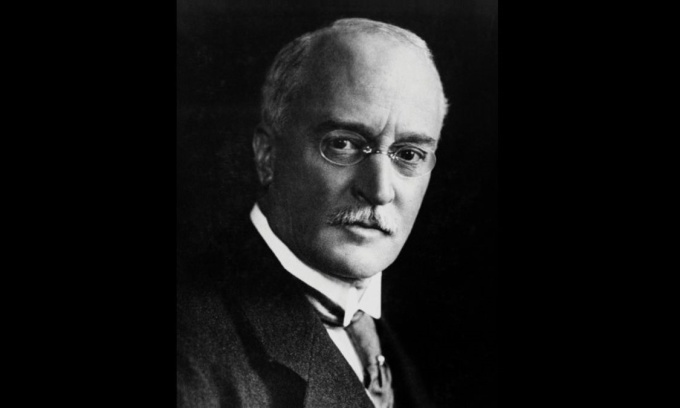As the engine he invented began to become more widely known, Rudolf Diesel disappeared while on a ship, leaving many questions.
Rudolf Diesel was born into a German family living in France in 1858. At the age of 14, Diesel wrote to his parents expressing his desire to become an engineer. Although his family faced financial difficulties and wanted him to drop out of school and go to work, Diesel persevered and entered the prestigious Technical University of Munich. Diesel graduated in 1880 with excellent results.
After working for several years in the field of refrigeration, Diesel began researching steam engines in 1890. He was interested in thermal efficiency and fuel efficiency. As an expert in thermodynamics, Diesel was troubled by the fact that up to 90% of the energy from fuel was wasted in steam engines.

Rudolf Diesel, inventor of the diesel engine. Photo: Wikimedia Commons
To overcome this drawback, he initially built an engine that used ammonia vapor. However, the experiment was unsuccessful, the engine exploded, nearly killing Diesel. After the incident, his health was seriously impaired and Diesel also had problems with his eyesight.
Still, he did not give up and after many years of effort, the diesel engine was born. The diesel engine was more efficient than the gasoline engine. It used compressed air to ignite the fuel instead of an electric spark, allowing it to produce more power from the same amount of fuel.
In 1897, the first complete diesel engine was developed. Diesel continued to work on his invention for the next few years. He founded the Diesel Engine Company in 1898 and his invention was used in industry and shipping.
On the evening of September 29, 1913, at the age of 55, he disappeared while on the SS Dresden ship traveling from Antwerp, Belgium, to Harwich, England.
Diesel had dinner and retired to his cabin around 10 p.m. When the steward came to wake him the next morning, as Diesel had requested, he was gone. There was no sign that Diesel had used the bed; his dressing gown was still neatly laid out and his watch was on the bedside table. Outside, aft on the deck, the crew found Diesel's hat and overcoat folded neatly.
Shortly after her husband disappeared, Diesel’s wife opened the bag he had left her before his trip. He had told her not to open it for a week. Inside were 20,000 German marks (about $120,000 in today’s money) and several bank statements showing that their accounts were nearly empty. A check of his diary revealed that he had marked a cross next to the date of his disappearance.
Ten days later, a badly decomposed body was discovered by the crew of the Coertsen in the Eastern Scheldt. The crew deemed the body unrecognizable and decided to throw it back into the sea after retaining personal belongings.
On October 13, 1913, the items were delivered to Diesel's son, Eugene, who identified them as belonging to his father. The diary's markings and financial difficulties led many to believe that Diesel had committed suicide.
However, not everyone is convinced by this speculation and a series of hypotheses have arisen from it.
Some have suggested that Diesel may have had an accident while walking on deck at night and fell over the railing. He had suffered from health problems for many years, so it is possible that a heart attack or stroke caused him to fall into the water.
Others believe that Diesel faked his death to escape financial troubles. He was a good inventor but not a good investor and it is suspected that Diesel ran away to start a new life.
Although Diesel was struggling financially, things were improving by the time of his death. His engine gained popularity and it began to replace steam engines in many applications.
This leads to the more popular conspiracy theory that Diesel was murdered to prevent his invention from falling into British hands. Diesel disappeared while on his way to England to meet with representatives of the Royal Navy, who were keen to consider the idea of using diesel engines for their submarines.
The trip angered the German military, who had previously refused to grant them exclusive use of his engines. However, there is no solid evidence that Diesel was murdered.
Regarding the Diesel suicide hypothesis, the question is why did he prepare his pajamas before the act? Why did Diesel want to commit suicide when the world's largest navy wanted to buy his engines?
It is likely that these questions will never be answered. However, despite the many mysteries surrounding his disappearance, his invention of the diesel engine clearly had a major impact on the world, shaping modern transportation and industry.
Vu Hoang (According to Historic Mysteries, Time )
Source link






![[Photo] Prime Minister Pham Minh Chinh chairs meeting to remove difficulties for projects](https://vstatic.vietnam.vn/vietnam/resource/IMAGE/2025/3/30/7d354a396d4e4699adc2ccc0d44fbd4f)
![[Photo] Ministry of Defense sees off relief forces to the airport to Myanmar for mission](https://vstatic.vietnam.vn/vietnam/resource/IMAGE/2025/3/30/245629fab9d644fd909ecd67f1749123)


























































































![[REVIEW OCOP] An Lanh Huong Vet Yen Cat](https://vstatic.vietnam.vn/vietnam/resource/IMAGE/2025/3/27/c25032328e9a47be9991d5be7c0cad8c)


Comment (0)